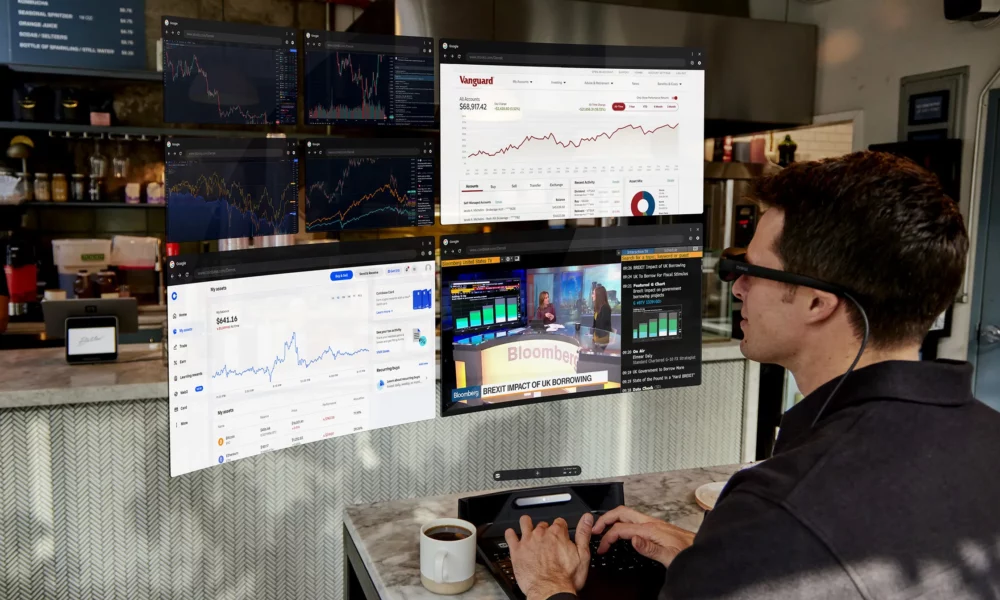
Can you imagine being able to work with a laptop that has a monitor of more than one hundred inches? Well, that is precisely what the guys from Sightfula startup founded by two ex-Magic Leap, with «SpaceTop», a computer that certainly offers an original approach to the world of personal computing and that aspires to combine the best of the physical world with the most advanced of the virtual world.
The device features augmented reality (AR) glasses that are connected to a full keyboard with a touchpad. Inside, we find a Qualcomm 865 processor, 8 GB of RAM and a storage capacity of 256 GB. As for its autonomy, the company promises up to five hours of full use.
And what about the screen? Through your operating system, Spacetop OS, users can visualize in their glasses a huge virtual space that they can use both as a single monitor and place all the windows they want in those hundred inches. At the moment, SpaceTop does not allow the installation of third-party applications, but in a similar way to what Google does with its Chromebooks, it facilitates the use of applications and web services such as Google Workspace, Slack, Microsoft 365, Zoom, Microsoft Teams or Google Meet, among the almost infinite possibilities offered by the web. On the other hand, if we get tired of so much “virtuality”, SpaceTop also offers us two USB-C ports and a DisplayPort 1.4 port where we can connect an external Full-HD monitor.
As for the glasses, Sightful explains that they are based on hardware developed by NReal and Wistron to develop a personalized model and, above all, one that is comfortable to wear for several hours. And although no further details about their technical specifications have been disclosed, if we take the Nreal Light launched in 2021 as a reference, we would be talking about a device with a screen resolution of 1080p per eye, a field of vision of 52º and a weight of no more than 88 grams. The manufacturer has also explained that these glasses can be offered with the appropriate graduation to their customers at no additional cost.
To acquire one of these laptops “of the future”, we must previously register in an invitation system, wait patiently for our turn to arrive and, when it does, be willing to pay the 2,000 euros that a computer costs… let’s not forget that in these moments aspire to be more than a proof of concept and that on paper, it does not offer anywhere near the performance that we can expect from a laptop that costs us 2,000 euros.
So yes, the entry barrier is high even for those who are convinced of the enormous possibilities that bringing augmented reality to our usual workspace can have.
In this same field, solutions such as VirtualDesktop, BigScreen or Immersed VR offer users the possibility of interacting with their computers in virtual reality spaces, but yes, they lack external peripherals to be able to do so with the comfort that a SpaceTop promises, which In any case, it proposes an interesting future line of work for many other manufacturers.



